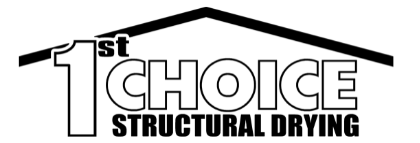Navigating Hidden Water Damage: Identifying Signs, Assessing Risks, and Implementing Solutions
Hidden water damage may remain unseen, but its consequences can be far-reaching and costly. While visible leaks and spills are easy to spot, the real threat lies in the subtle yet destructive world of hidden water damage. From within walls to beneath floors, moisture can seep into building materials, causing structural decay, mold growth, and compromised indoor air quality. Understanding the significance of addressing hidden water damage is paramount for maintaining a safe and healthy living environment.
Even seemingly minor issues, like a persistent musty odor or a small discolored spot, could be indicative of a more extensive problem lurking behind the scenes. In this article, we’ll delve into the signs that hint at hidden water damage, explore the risks associated with neglecting it, and provide solutions to detect, diagnose, and prevent this stealthy menace. By shedding light on this concealed threat, we aim to empower homeowners with the knowledge needed to safeguard their homes from the damaging effects of hidden water damage.
The Concealed Threat: Understanding Hidden Water Damage:
Hidden water damage is a silent adversary that often goes unnoticed until significant harm is done. Unlike visible water damage, which is readily apparent, hidden water damage occurs behind walls, under floors, and in other concealed areas, making it difficult to detect without careful inspection. This type of damage can stem from various sources, such as plumbing leaks, roof leaks, or even improper ventilation leading to condensation buildup.
Understanding the concept of hidden water damage is crucial. It operates stealthily, gradually undermining the structural integrity of your home. The longer it persists, the greater the potential for extensive and costly repairs. By the time visible signs emerge, the damage might already be severe.
Hidden water damage often involves the slow saturation of materials like drywall, insulation, and wood framing. As moisture infiltrates these materials, they weaken, warp, and become vulnerable to mold growth. Over time, this deterioration can compromise the stability of your home and pose health risks to its occupants.
Recognizing the existence of hidden water damage is the first step in mitigating its impact. In the following sections, we’ll delve into the signs that hint at its presence, the dangers of ignoring it, and the measures to detect, address, and prevent this lurking peril. Stay vigilant, and you’ll be better equipped to safeguard your home from the insidious effects of hidden water damage.
Subtle Clues: Signs of Hidden Water Damage:
Hidden water damage rarely announces itself with fanfare; instead, it leaves behind subtle but telling clues that astute homeowners can detect. These signs, though often overlooked, can serve as early indicators of a deeper issue brewing beneath the surface.
Musty Odors: If your nose detects an unexplained musty or earthy smell, it could be a sign of hidden water damage. Damp, stagnant areas are breeding grounds for mold and mildew, releasing distinct odors that can permeate your living spaces.
Discoloration and Stains: Keep an eye out for discolored spots on ceilings, walls, or floors. Yellow or brown stains may indicate water penetration. Additionally, peeling or bubbling paint and wallpaper can hint at hidden moisture issues.
Warped or Buckled Surfaces: Wood flooring that has begun to warp, swell, or buckle is often a result of water damage. Similarly, warped baseboards or door frames can signal hidden moisture.
Unexplained Increase in Utility Bills: A sudden spike in your water bill might suggest an undetected leak. Hidden water damage isn’t limited to visible spaces; it can occur in your plumbing system, too.
The Presence of Mold: While mold itself might not always be visible, its growth is a sure sign of moisture. If you notice mold in seemingly dry areas, it’s an indication that moisture has been present.
Recognizing these subtle clues can help you catch hidden water damage early, preventing it from spiraling into a more significant problem. In the next section, we’ll delve into the potential risks associated with ignoring these signs and leaving hidden water damage unchecked. Remember, addressing the issue promptly can save you from substantial headaches down the line.
The Dangers of Ignoring Hidden Water Damage:
Ignoring hidden water damage might seem like a harmless oversight, but it can have far-reaching consequences that extend beyond the immediate inconvenience. Left untreated, hidden water damage can lead to a cascade of problems that compromise both your home’s structural integrity and your family’s well-being.
Structural Compromises: The gradual saturation of building materials weakens their structural integrity. Wood framing becomes susceptible to rot, and drywall loses its strength. Over time, this can lead to sagging ceilings, buckling floors, and even compromised load-bearing elements.
Mold Infestations: Moisture-rich environments are breeding grounds for mold growth. Mold can spread rapidly in concealed areas, releasing spores into the air that can trigger allergies and respiratory issues. Prolonged exposure to mold can pose serious health risks, especially to vulnerable individuals like children, the elderly, and those with respiratory conditions.
Reduced Indoor Air Quality: Hidden water damage contributes to poor indoor air quality as mold spores, and other allergens circulate through your home’s ventilation system. This can exacerbate allergies and respiratory conditions, impacting the health and comfort of your family.
Increased Repair Costs: What might start as a small, hidden issue can escalate into a costly repair project if left unattended. By the time visible signs become evident, the extent of damage may be substantial, necessitating extensive repairs that strain your finances.
Compromised Property Value: Hidden water damage isn’t just a present concern—it can also impact your home’s resale value. Potential buyers may uncover the damage during inspections, leading to negotiation hurdles or even the loss of a sale.
Addressing hidden water damage promptly is an investment in your home’s longevity and the well-being of those who live in it. In the next section, we’ll explore how to detect and diagnose hidden water damage, equipping you with the tools to take action and prevent further harm. Remember, the earlier you intervene, the less severe the consequences will be.
Detecting and Diagnosing Hidden Water Damage:
Detecting and diagnosing hidden water damage requires a blend of vigilance, knowledge, and appropriate tools. While some signs might be subtle, others can be uncovered through systematic investigation and professional expertise.
Moisture Meters: Moisture meters are invaluable tools for detecting hidden water damage. These devices measure the moisture content of building materials, helping pinpoint areas with elevated moisture levels that may indicate water infiltration.
Thermal Imaging: Thermal imaging cameras can identify temperature anomalies that might be indicative of hidden moisture. Cold spots on walls or floors could signify areas where water has penetrated, creating a temperature difference.
Professional Inspections: Hiring a professional structural drying and water damage restoration company is a prudent step. Trained experts possess the experience and equipment to conduct thorough assessments, using techniques like infrared thermography to detect hidden moisture and damage.
Plumbing Checks: A common source of hidden water damage is plumbing leaks. Regularly inspect your plumbing system for signs of leaks, such as decreased water pressure, unusual sounds, or water stains around fixtures.
Visual Inspection: Sometimes, visible signs might lead you to hidden water damage. Investigate any unusual discoloration, stains, or unusual odors and trace them back to their source.
Early detection and diagnosis are essential in preventing hidden water damage from escalating. Once detected, taking swift action is critical to minimizing the impact and ensuring effective restoration. In the next section, we’ll explore the solutions and mitigation strategies to tackle hidden water damage head-on, safeguarding your home and its inhabitants.
Solutions and Mitigation Strategies:
Addressing hidden water damage requires a multi-pronged approach that involves identifying the source of moisture, drying out affected areas, and preventing mold growth. Depending on the extent of the damage, the following strategies can be employed:
Identify and Repair Leaks: Pinpoint and fix the source of moisture, whether it’s a leaky pipe, roof, or other areas of water intrusion.
Structural Drying: Utilize professional-grade drying equipment such as air movers and dehumidifiers to thoroughly dry out affected areas and prevent further moisture buildup.
Mold Prevention: Apply antimicrobial treatments to deter mold growth, especially in areas prone to moisture accumulation.
Ventilation Improvement: Enhance ventilation in concealed spaces to reduce humidity levels, discouraging mold and mildew growth.
Regular Monitoring: After addressing the damage, keep a watchful eye on the previously affected areas. Regular checks ensure that no moisture or mold-related issues resurface.
By acting swiftly and employing effective mitigation strategies, you can prevent hidden water damage from spiraling into a major problem. However, prevention is equally vital. In the final section, we’ll provide homeowners with actionable prevention tips to mitigate the risk of hidden water damage and maintain a safe, dry, and healthy home.
Prevention Tips for Homeowners:
Preventing hidden water damage involves proactive measures to eliminate moisture sources and maintain a dry environment. Here are some preventive steps homeowners can take:
Regular Inspections: Conduct regular inspections of your home, paying attention to potential problem areas like basements, crawlspaces, and attics.
Address Leaks Immediately: If you detect leaks, no matter how small, address them promptly to prevent moisture from spreading.
Proper Ventilation: Ensure proper ventilation in areas prone to moisture, such as bathrooms, kitchens, and basements.
Gutters and Downspouts: Keep gutters and downspouts clean and functioning properly to channel water away from your home’s foundation.
Seal Vulnerable Areas: Seal gaps, cracks, and openings in walls, windows, and doors to prevent water infiltration.
Regular Maintenance: Regularly maintain appliances like water heaters and air conditioning units to prevent leaks and moisture buildup.
Professional Inspections: Schedule professional inspections, especially after severe weather events, to identify hidden water damage early.
By implementing these prevention tips, you’re taking proactive steps to safeguard your home from the risks associated with hidden water damage. Remember that the well-being of your home and family depends on your diligence in addressing and preventing this concealed threat.
Conclusion:
Hidden water damage is a stealthy adversary that demands vigilance and timely action. Subtle signs can be early warnings of a more extensive problem lurking beneath the surface. Ignoring these signs can lead to structural damage, mold growth, and compromised indoor air quality. By recognizing the signs, understanding the risks, and employing detection methods, you can take charge of addressing hidden water damage. Swift intervention, professional expertise, and preventive measures will ensure that your home remains a safe, healthy, and resilient haven for years to come.
For expert assistance in detecting, diagnosing, and mitigating hidden water damage, rely on the expertise of 1st Choice Structural Drying. Our professionals are equipped with the tools and knowledge needed to identify and address concealed moisture issues. Contact us today to schedule an assessment and protect your home from the hidden threats of water damage.

